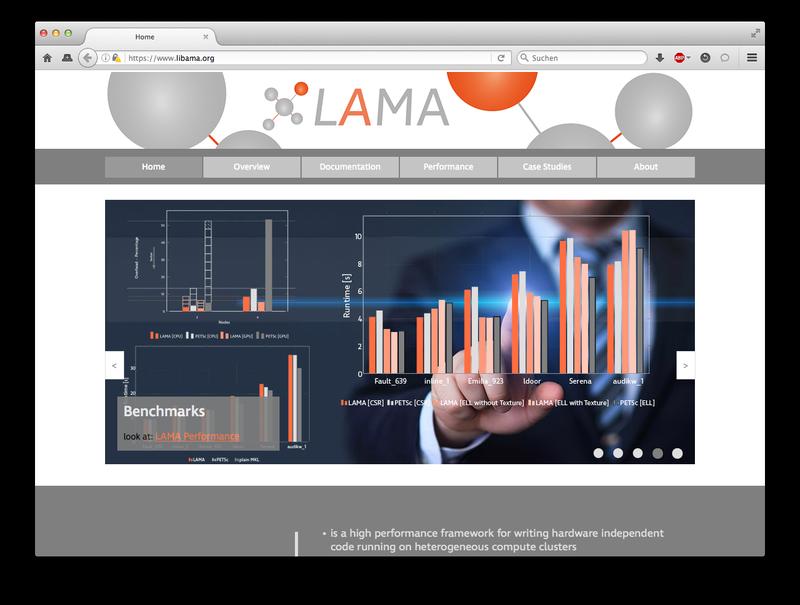
LAMA 2.0: Streamline Hardware-Independent Code Development

www.libama.org
Fraunhofer SCAI
By offering DSL-like C++-Syntax LAMA encourages writing of hardware-independent code. The framework allows the management of data on heterogeneous and distributed system architectures. These can range from embedded “System on a Chip” (aka SoC) devices to highly-parallel Supercomputers.
Consequently, LAMA offers full cluster support. Kernel management is provided with ready-to-use modules encapsulating interfaces to Intel® MKL and Nvidia® cuBLAS/cuSPARSE (targeting all multicore CPUs, Nvidia® GPUs, and Intel® Xeon® Phi™). For the purpose of extending LAMA, the framework supports the integration of custom modules.
Hence, it greatly facilitates the development of fast and scalable software for nearly every system on every scale. LAMA accelerates the time-to-market for new product developments significantly, reduces the time spent in maintaining existing code, and offers up-to-date hardware compatibility for even the latest architectures.
Typically, LAMA targets applications with needs in numerical mathematics (such as CFD and FEM simulation). Furthermore, LAMA 2.0 integrates methodology in the areas of optimization (e.g. for seismic imaging), computer vision, and deep learning.
It is available with an industry-friendly dual licensing model (AGPL for open source or individual agreements for other interests).












